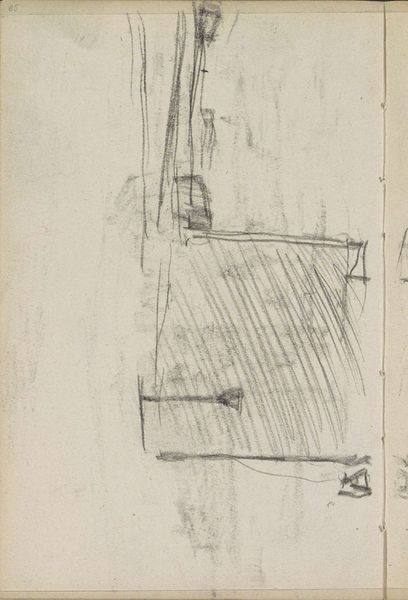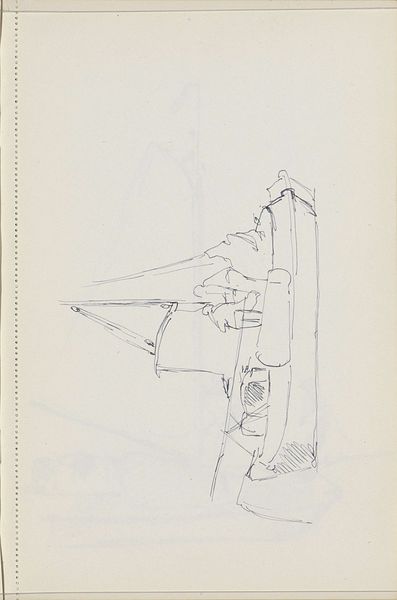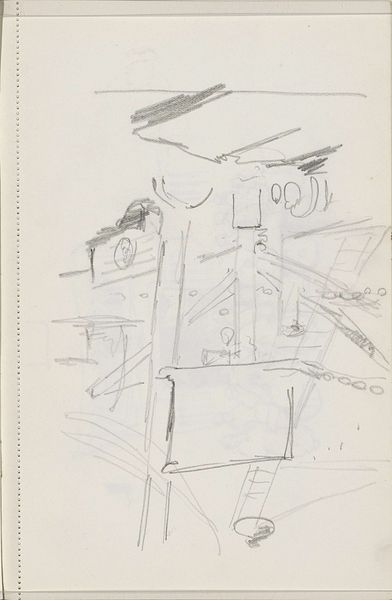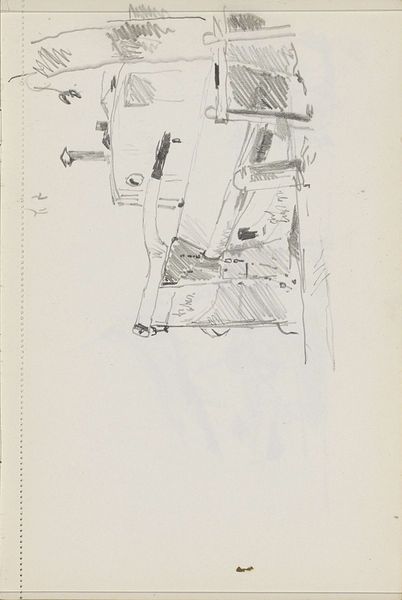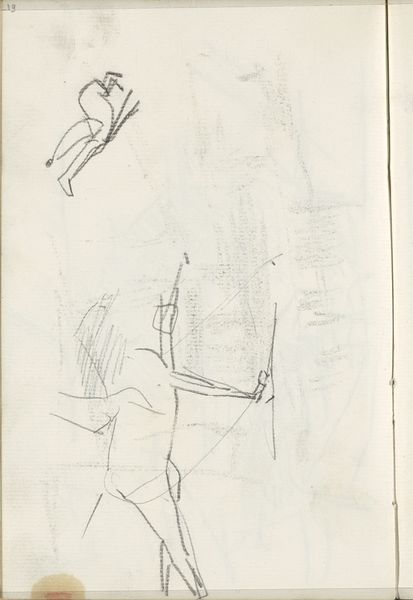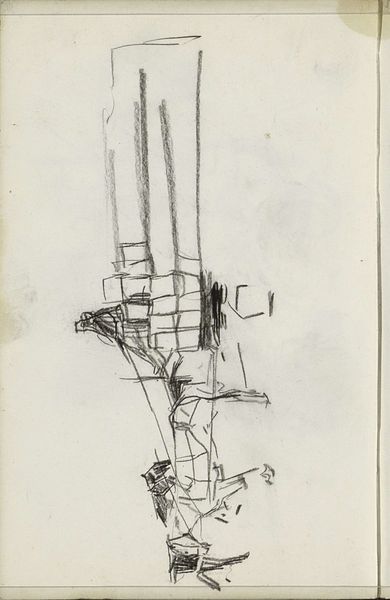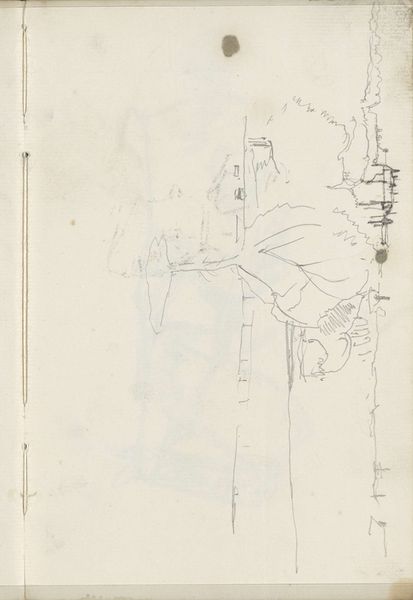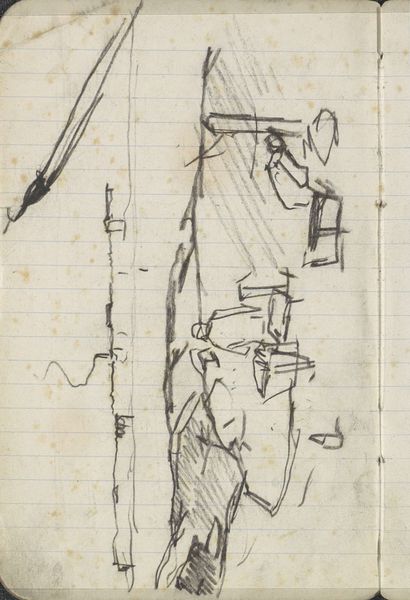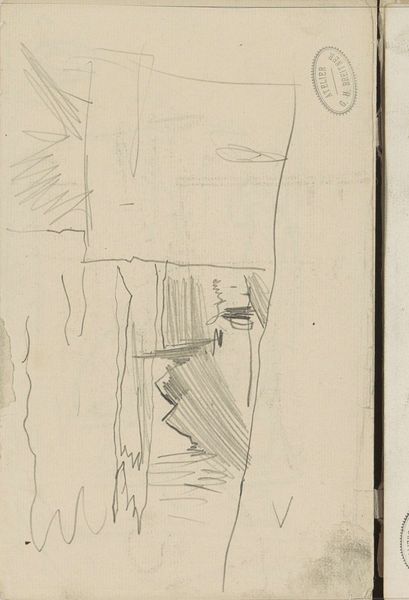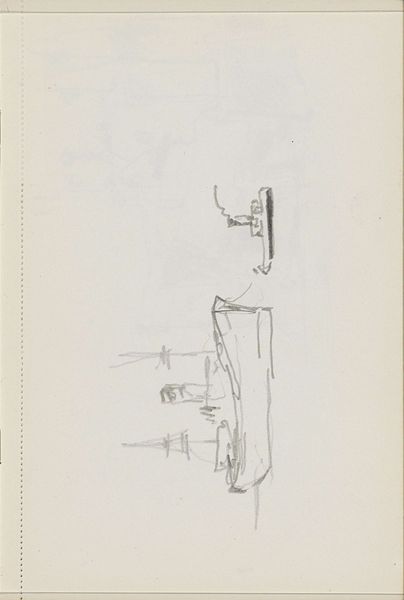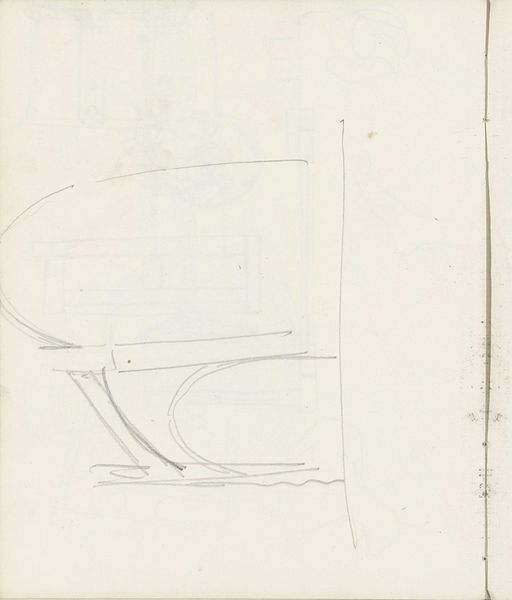
drawing, paper, pencil
#
drawing
#
amateur sketch
#
thin stroke sketch
#
sketched
#
incomplete sketchy
#
hand drawn type
#
landscape
#
paper
#
personal sketchbook
#
idea generation sketch
#
sketchwork
#
sketch
#
pencil
#
rough sketch
#
modernism
#
realism
#
initial sketch
Copyright: Rijks Museum: Open Domain
Curator: At first glance, I see vulnerability—almost fragile. The strokes feel hesitant, uncertain. Editor: Well, let’s contextualize that feeling. This is a pencil drawing by Cornelis Vreedenburgh, titled "Deel van het exterieur van een schip," or "Part of the exterior of a ship," created around 1936. It’s held at the Rijksmuseum. Curator: Knowing it's a ship’s exterior gives those tentative lines more meaning. Think of the social context of ship-building in the 1930s; the economic instability following the Depression surely impacted shipbuilding and maritime labor. I see the potential narratives embedded within that rough sketch. Editor: Exactly. The rough sketch is interesting here. The choice of materials–pencil and paper–speaks to accessibility, and the sketch's informality shifts art historical focus from finished artwork toward design and function. Curator: It makes me consider who this ship was for—was it a luxury liner or a work vessel? The form suggests industry, not leisure, given the focus on structure, but this reading can also lead down many unexpected corridors of social meaning. Editor: Look closer at the strokes. The hatching shows some level of control of the materials and craft and is very efficient at creating shading with the minimal media. Do you see any indication if the artist explored the labor connected to such vessels? Curator: The incomplete nature does leave it open for interpretations about both production and intended audience; the lack of detail also forces a consideration on the legacy of Dutch maritime activity as a legacy of imperialist trade and military power. I appreciate Vreedenburgh acknowledging how incomplete those renderings were in his mind. Editor: True, yet these lines and shading also demonstrate a command of industrial techniques, making apparent his familiarity with naval materials. Curator: Yes. So what’s revealed here is a study, of sorts, and the artist is experimenting with the politics, and implications, of sketching. Editor: Ultimately, the artist prompts conversations around industry and individual craft—we both see the process and implications of production itself.
Comments
No comments
Be the first to comment and join the conversation on the ultimate creative platform.
